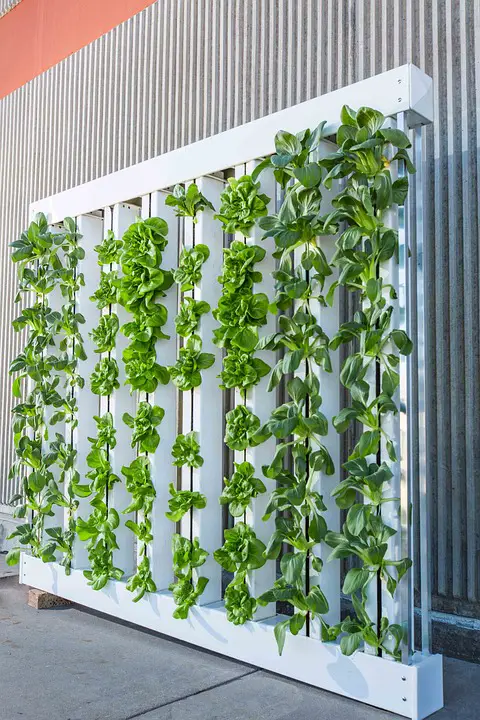Introduction
Hydroponics is a method of growing plants without soil, using mineral nutrient solutions in water solvent. This technique is gaining popularity among gardening enthusiasts, urban farmers, and commercial growers due to its numerous advantages. By mastering the basics of hydroponic systems, you can take your love for gardening to new heights. This beginner’s guide will help you understand the essentials of hydroponics and get started on your own hydroponic journey.
Benefits of Hydroponic Systems
Hydroponic systems offer several advantages over traditional soil-based gardening. Firstly, they allow for precise control over nutrient delivery, ensuring plants receive the perfect amount of nutrients for optimal growth. Secondly, hydroponic systems use less water compared to soil-based systems, making them more environmentally friendly. Additionally, the absence of soil eliminates the risks associated with pests, diseases, and weeds, leading to healthier plants and higher yields.
Types of Hydroponic Systems
There are various types of hydroponic systems to choose from, each with its own advantages and considerations:
1. Deep Water Culture (DWC)
DWC is a simple yet effective hydroponic system where plant roots are suspended in a nutrient-rich solution. Oxygen is continuously supplied to the roots using air pumps or air stones, promoting vigorous growth. This system is ideal for beginners due to its low cost and ease of setup.
2. Nutrient Film Technique (NFT)
In NFT systems, a thin film of nutrient solution flows over the roots, providing nutrients and maintaining moisture. The excess solution is collected and re-circulated, minimizing water usage. NFT systems are suitable for growing leafy greens and herbs.
3. Ebb and Flow
Ebb and flow, also known as flood and drain, involves periodically flooding the plant roots with nutrient solution and then draining it away. This cyclic process provides water, nutrients, and oxygen to the roots, mimicking natural watering patterns. Ebb and flow systems are versatile and can support a wide range of plants.
4. Drip System
Drip systems involve delivering a nutrient solution directly to the plant roots through emitters. This method allows for precise control of nutrient delivery and is commonly used in commercial hydroponic setups.
Setting Up Your Hydroponic System
Before setting up your hydroponic system, there are a few key steps to consider:
1. Choosing the Right Location
Select a location with adequate access to natural or artificial light and a stable temperature, as these factors play a crucial role in the success of your hydroponic garden.
2. Selecting a Growing Medium
The choice of growing medium depends on the type of hydroponic system you opt for. Commonly used mediums include expanded clay pellets, coconut coir, perlite, and rockwool.
3. Nutrient Solution Management
Mastering nutrient solution management involves understanding the specific nutrient requirements of different plants and maintaining the correct pH levels. Regular monitoring and adjustments are necessary to ensure healthy plant growth.
4. Timely Maintenance and Monitoring
Proper maintenance and monitoring of your hydroponic system are crucial to prevent any issues. Regularly check for clogged emitters, adjust water levels, and ensure proper ventilation.
FAQs
Q: How often should I change the nutrient solution?
A: The frequency of changing the nutrient solution depends on several factors such as plant type, growth stage, and system size. As a general guideline, it is recommended to replace the nutrient solution every 1-2 weeks.
Q: Can I grow any plant hydroponically?
A: While hydroponic systems can support a wide range of plants, some may thrive better in soil-based cultivation. Leafy greens, herbs, tomatoes, cucumbers, and strawberries are common choices for hydroponic gardening.
Q: How much light do hydroponic plants need?
A: Plants need an adequate amount of light to carry out photosynthesis. Most hydroponic plants require 12-16 hours of light per day. Utilizing full-spectrum LED grow lights is a popular option due to their energy efficiency and ability to provide the necessary light spectrum for plant growth.
Q: Is hydroponics suitable for indoor gardening?
A: Absolutely! Hydroponic systems are well-suited for indoor gardening as they can be set up in limited spaces. They also allow you to control environmental factors such as light, temperature, and humidity, resulting in successful indoor cultivation.
Mastering the Basics: A Beginner’s Guide to Hydroponic Systems

Affiliate Disclaimer
As an affiliate, we may earn a commission from qualifying purchases. We get commissions for purchases made through links on this website from Amazon and other third parties.



